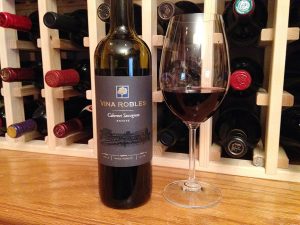Columbia Winery Columbia Valley Cabernet Sauvignon 2013: Almost black color; neutral nose; blackberry, cherry, blackcurrant tang, black olive on the palate; mild tannin and acidity, smooth, easy drinker. Cabernet sauvignon 81%, syrah 13%, malbec 3%, other red grapes 3%. The Columbia Valley is The State of Washington’s largest appellation with more than 60% of the wine grape planting (17,000 acres); it even includes part of Oregon. You generally think of the northwest as a temperate rain forest, but wine is done in the shrub steppe lands on the eastern side of the Cascade Mountains; vineyards get about eight inches of rain annually and 16 hours of sunlight daily (Oregon’s vineyards are similar). The Columbia Valley does have the mighty Columbia River—largest river in the Pacific Northwest, 1,243 miles long, flowing through a Canadian province and seven states, draining an area the size of France. So there is water to be had, and Washington vintners use their terroir and their water rights to make excellent wine; Washington and New York tie for second in U.S. grape production (each with 3.5% of U.S. total), but Washington has more wineries and usually produces slightly more wine. Texas ranks around fifth-to-seventh, depending on who is counting and how they count. California dominates, by the way, with almost 89% of U.S. wine and grape production. $16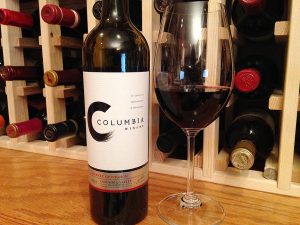
Author: Gus Clemens
Maestro Sanguineti Nessun Dorma Super Tuscan 2012
Maestro Sanguineti Nessun Dorma Super Tuscan 2012: Very smooth, approachable Super Tuscan blend—50% sangiovese, 30% merlot, 20% syrah. Drinks almost like a fruity California red; ripe cherry, strawberry, red fruits galore, some blackberry, too; fresh, bright, medium tannin and acidity. This clearly is not a smack-you-in-the-face brute that some Super Tuscans can be (thanks to absence of cab); the syrah struggles to add heft and complexity to the mild-mannered sangiovese and merlot. Super Tuscan wines are product of 1970s revolt by some Chianti makers who bridled under prohibitions against using cab, merlot, and syrah in their blended wines. Super Tuscan term not only had macho appeal, it set their wine apart from lower-quality Chianti table wines dominating Chianti bottlings back then. Super Tuscans found their audience, and Chianti makers stepped up, too, making for better times for wine drinkers ever since. Winemaker Antonio Sangineti named this after his favorite favorite Pucinni aria (“Non Shall Sleep”), a staple of Luciano Pavarotti (and The Three Tenors) concerts. This sings well too, but you should be able to sleep after sipping. $20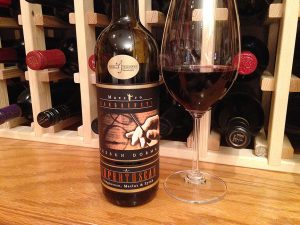
Trinity Hill Pinot Noir New Zealand 2013
Trinity Hill Pinot Noir New Zealand 2013: Supple sipper, velvety smooth; ripe cherries, strawberry, raspberry, plum; medium body, low oak, fresh, bright with engaging touch of tartness; smooth-grained tannin, reserved alcohol (13%). Really nice NZ pinot value that fearlessly bucks trend to blowzy, big-oak, and hyped alcohol contrivances some value pinot producers pursue. This is has much more of the refined elegance of a pricier Burgundy or Washington-Oregon classically made pour. Continuing proof New Zealand makes some great wines beyond sauv blanc. $17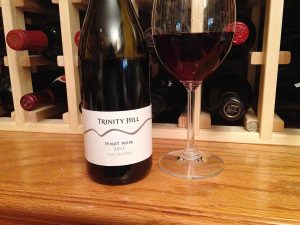
Michael-David Inkblot Cabernet Franc 2013
Michael-David Inkblot Cabernet Franc 2013: Very dense, full body with bushels of black cherry, plum, blackberry, some graphite, a tingle of blackcurrant tang; touch of pepper on the nose; smooth tannin, soft acidity, oaked (but not obnoxiously so—18 months in French). Lodi hardly is a cab franc capitol, but Michael-David regularly defies convention to make plush, bold, big flavors from their ripe Central Valley grapes. You encounter cab franc more often as a blending grape to contribute its inky color (M-D got the name right), and more often in America as a varietal from Washington-Oregon or the Finger Lakes of New York, but M-D pulls it off, as they typically do with all their offerings. If your fancy drifts to delicate and ethereal, M-D efforts likely are not for you. If you enjoy wines you can chew and fruits that flood every cell in your mouth with juicy flavor, this Lodi leader has your back again. $35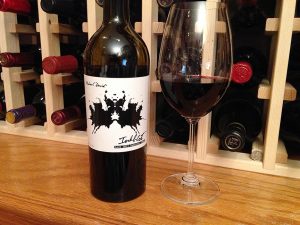
E. Guigal Côtes du Rhône White 2013
E. Guigal Côtes du Rhône White 2013: Wonderful blend of 65% viognier, 15% roussanne, 10% marsanne, 8% clairette, 2% bourboulenc; combined they create delightful complexity, depth, and richness. Very pale yellow color, flower petals on the nose—after some exposure to air; delicate honeysuckle, pear, apricot, white peach on the palate. Guigal historically features viognier in their blanc, and this offering affirms that judgment. Full body, dry, smooth, no oak, brush of crisp fruitiness, some minerality and ginger on clean, cleansing finish. E. Guigal is a go-to quality-value play year after year, and this delight deliciously sustains their record. $14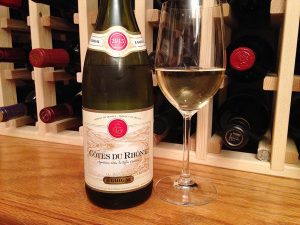
Pedernales Cellars Texas Tempranillo 2012
Pedernales Cellars Texas Tempranillo 2012: Bright cherry, raspberry, smoky minerals on enchanting nose; raspberry, cherry, blackberry, plum, chip of chocolate, bit of balsamic, spice on the palate; dash of vanilla, appropriate oak; medium-plus body, restrained acidity and tannin, interesting tang on lingering finish. Pedernales Cellars is a premier Texas maker with admirable commitment to sustainable viticulture and ecological reverence. The sixth generation Texans who own and run the operation have particular focus on tempranillo and viognier—grapes that appear destined to be signature Texas varieties. This is seriously good serious red wine at a fair price (which doesn’t always happen with Texas bottlings). Enjoy. $17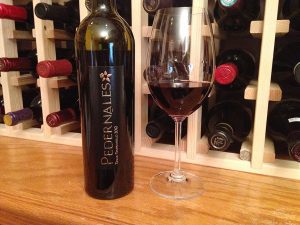
Santa Cristina Bianco Umbria 2013
Santa Cristina Bianco Umbria 2013: Crisp, zippy citrus, peach nose; Granny Smith apple, orange rind, whisper of fruity sweetness, pinch of pear and peach on the palate; excellent acidity, retains its clean freshness through the finish; this is excellent alternative to sauvignon blanc and pinot grigio. Very pale yellow in color, blend of grechetto and procanico grapes; grechetto in particular is classic grape of Umbria, a region in central Italy. Umbria is the only Italian region that has no coastline or border with another country; its most famous towns are Assisi (associated with St. Francis) and Norcia (associated with St. Benedict). The Antinori family makes this wine, as they have been doing in Umbria for more than 600 years—26 generations dating back to 1385. They’ve figured out how to make wine, as this effort attests. You don’t last that long by lounging on laurels and the family pursues modern winemaking techniques and tastes; they now also make wine in Napa, Chile, and Hungary. This is savory delight that evolves and improves with air; its vibrant acidity and freshness pairs it superbly with many foods. $11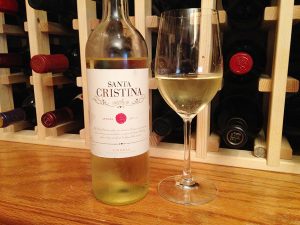
Simi Alexander Valley Cabernet Sauvignon 2012
Simi Alexander Valley Cabernet Sauvignon 2012: Nice enough effort; expected soft tannin and greenness of Alexander Valley red; plenty of cherry, berry, some black currant tang on the tongue, somewhat restrained oak; scores points for creaminess, smoothness, spice on the finish; fruit-forward, but lacks balance and falls short of overall wonder for the price. It you enjoy big fruit-oak a’plenty Cal cabs, give this a shot to see if you disagree with my evaluation. Certainly not terrible, but not compelling joy either. Alas. $21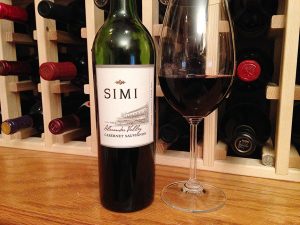
Becker Vineyards Chardonnay 2013
Becker Vineyards Chardonnay 2013: Value-focused chard; rich, plenty of oak and buttery softness on the palate, balanced with acidity; oranges, lemon-lime; whiff of thyme or lavender herbaceousness on the nose; easy drinker, simple, full flavored if somewhat one-dimensional. Becker makes this at its beautiful winery-tasting room-shop in Stonewall; the venue is a must-visit on the Texas Wine Trail in the Hill Country. It almost certainly is made with out-of-state grapes; the “For Sale in Texas Only” on the label is the tell; in one of the quirks of our country’s ridiculous mess of wine/alcohol laws and rules, you don’t have to tell consumers the source of your grapes if you don’t sell outside your state. If this had been made with Texas-grown grapes, Becker would brag about it. Likely, this juice comes from California’s Central Valley, but that’s just informed guess. The pleasant pour is at least made in Texas (the juice got here as quick as it could). $9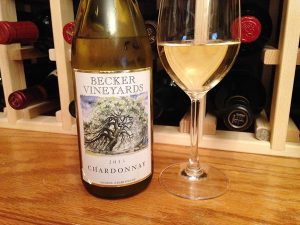
Vina Robles Cabernet Sauvignon 2012
Vina Robles Cabernet Sauvignon 2012: Excellent Paso Robles effort made with satisfying restraint; big, juicy fruit, blackberries, plum, black cherry, blueberry, vanilla; creamy mouth with structure and complexity for the price. Cab aged mainly in French oak, but some in American and Hungarian oak, for eight months, then petit verdot and tannat were added for structure and freshness. Final blend aged an additional year in oak to integrate the flavors. In spite of 20 months in various oaks, this remarkably is not frightening oak monster. Vina Robles cabs regularly score very well, and this carries on the tradition and exhibits skill in blending and use of oak. It is medium-full bodied, modest alcohol (13.7%) for Cal cab, balanced, good acidity and well-behaved tannin, a tasty change of pace from massive Napa cabs. Paso Robles is rising star wine growing area at southern end of California Central Coast region; at some 666,500 acres, it is one of California’s largest regions, covering northern half of San Luis Obispo County. It consistently produces rich, ripe reds from warm-climate grape varieties. This smoothly delicious effort is clearly worth a cork-pull on your wine bucket list. $21